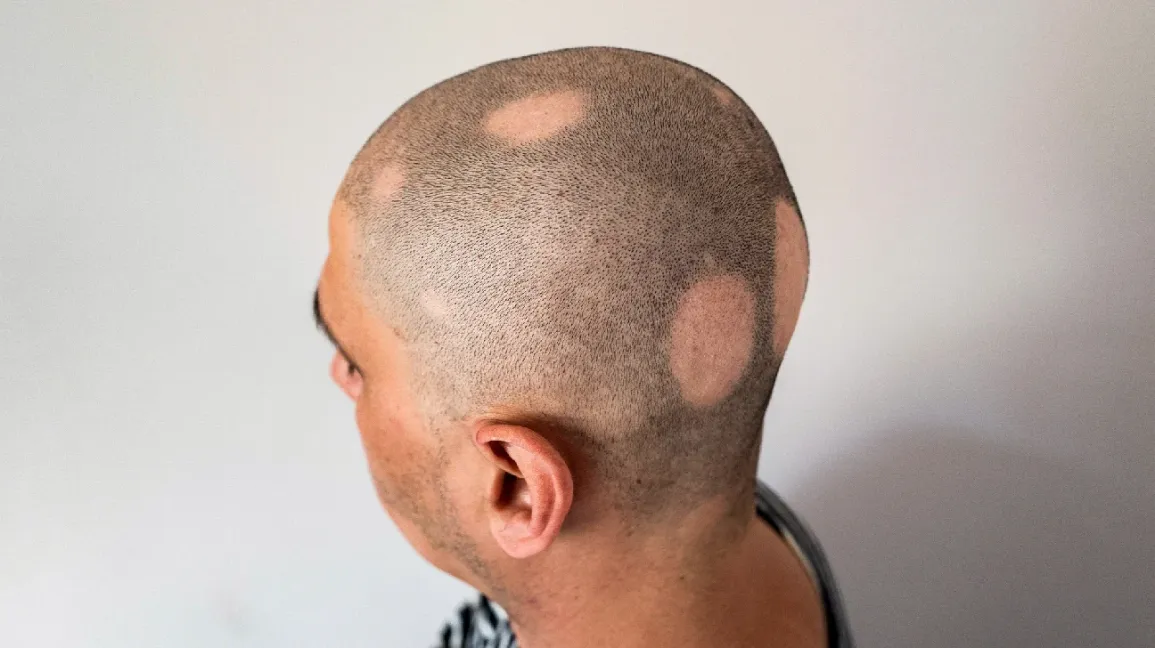
Alopecia is a condition characterized by hair loss that can affect individuals of all ages and backgrounds. It can manifest in various forms, with alopecia areata being one of the most common types, resulting from an autoimmune response where the body’s immune system mistakenly attacks hair follicles. Understanding alopecia involves exploring its connections to other health conditions, the impact it can have on social interactions, and the ongoing research aimed at finding effective treatments. Here are some key facts that shed light on this condition and its broader implications.
Alopecia Areata Prevalence: Alopecia areata is an autoimmune condition that affects approximately 2% of the global population at some point in their lives. This means that millions of people worldwide may experience hair loss due to this condition, which can manifest as patchy hair loss on the scalp or other areas of the body. The prevalence indicates that alopecia areata is not uncommon, and it highlights the need for awareness and support for those affected.
Age of Onset: Alopecia areata typically begins in childhood or early adulthood, with about 50% of cases appearing before the age of 20. This early onset can have significant implications for individuals as they navigate formative years, where appearance and self-esteem are often closely tied to social interactions. The impact on younger individuals can be profound, as they may face challenges in acceptance and confidence due to their hair loss.
Types of Alopecia: Alopecia encompasses several types, including alopecia areata (characterized by patchy hair loss), alopecia totalis (which results in total loss of hair on the scalp), and alopecia universalis (leading to total loss of hair on the scalp and body). Each type presents unique challenges and experiences for individuals. Alopecia areata may allow for some regrowth, while alopecia totalis and universalis often create more significant changes in appearance, impacting daily life and self-image.
Genetic Factors: Research indicates that about 20% of individuals with alopecia areata have a family history of the condition, suggesting a genetic predisposition. This hereditary aspect underscores the complexity of alopecia as an autoimmune disorder, where genetic factors may play a role in susceptibility. Understanding these genetic links can help in developing targeted treatments and provide insight into the risk for family members of affected individuals.
Autoimmune Nature: Alopecia areata is classified as an autoimmune disorder, meaning that the body’s immune system mistakenly attacks its own hair follicles. This results in hair loss, as the immune response disrupts the normal hair growth cycle. The autoimmune nature of alopecia areata distinguishes it from other forms of hair loss, such as androgenetic alopecia (male or female pattern baldness), and highlights the importance of understanding immune system function in developing effective treatments.
Hair Follicle Cycle: Hair grows in cycles, which include the anagen (growth), catagen (transition), and telogen (resting) phases. Alopecia can disrupt this cycle, particularly affecting the anagen phase, where hair is actively growing. When the immune system attacks hair follicles, it can lead to premature entry into the telogen phase, resulting in hair loss. Understanding the hair growth cycle is crucial for developing therapies that can reinitiate hair growth and restore normal follicular function.
Treatment Options: There are several treatment options available for alopecia areata, including corticosteroids, topical immunotherapy, and minoxidil. Corticosteroids can reduce inflammation and suppress the immune response, while topical immunotherapy aims to trigger an allergic reaction that may encourage hair regrowth. Minoxidil, commonly used for other types of hair loss, can also promote hair growth in some individuals with alopecia areata. However, the effectiveness of these treatments varies significantly from person to person, making personalized treatment plans essential.
Psychological Impact: The psychological impact of alopecia can be significant, with research indicating that up to 50% of individuals with alopecia experience anxiety and depression. The visible nature of hair loss can lead to feelings of self-consciousness and social withdrawal, affecting personal and professional relationships. Support groups and mental health resources are vital for individuals coping with the emotional challenges of alopecia, as they provide a sense of community and understanding.
World Alopecia Day: World Alopecia Day is celebrated on the first Sunday of September each year, aiming to raise awareness and support for those affected by alopecia. This global event encourages individuals to share their stories, promote understanding, and foster a sense of community among those experiencing hair loss. Activities often include educational events, fundraising for research, and social media campaigns to spread awareness about the condition and its impact.
Alopecia and Gender: Alopecia areata affects both men and women equally, which contrasts with male pattern baldness, which is more common in men. This equality in prevalence highlights that hair loss can impact anyone, regardless of gender. However, societal perceptions and expectations regarding hair can differ between genders, which may influence how individuals experience and cope with alopecia. Understanding these dynamics is important for providing appropriate support and resources to all affected individuals.
Alopecia Areata Statistics: An estimated 147 million people worldwide are affected by some form of alopecia, underscoring the widespread nature of this condition. This statistic highlights the need for increased awareness, research, and support for individuals experiencing hair loss. The global prevalence indicates that alopecia is a significant health issue, affecting diverse populations across different cultures and regions, and it emphasizes the importance of community and advocacy for those impacted.
Duration of Hair Loss: Alopecia areata can lead to hair regrowth in some individuals within a few months, while others may experience long-term hair loss. The duration of hair loss varies widely among individuals, with some experiencing multiple episodes of hair loss and regrowth throughout their lives. Factors influencing regrowth include the extent of hair loss, age, and individual response to treatment. Understanding these variations is crucial for setting realistic expectations and providing appropriate support to those affected.
Alopecia in Animals: Alopecia is not limited to humans; it can also affect animals, particularly dogs. Conditions like alopecia X, which is characterized by hair loss in certain breeds such as Pomeranians and Chihuahuas, demonstrate that hair loss can occur across species. Veterinary dermatologists often diagnose and treat these conditions, which can have similar autoimmune or genetic components. This highlights the broader implications of alopecia beyond human health and the need for awareness in pet care.
FDA-Approved Treatments: In 2021, the FDA approved the first treatment specifically for alopecia areata, called baricitinib. This approval marked a significant milestone in the treatment landscape for this condition, offering hope to those affected. Baricitinib is a Janus kinase (JAK) inhibitor that works by targeting the immune response involved in hair loss. The availability of FDA-approved treatments represents a critical advancement in understanding and managing alopecia areata, paving the way for further research and development of effective therapies.
Cultural Representation: Alopecia is increasingly represented in media and popular culture, with public figures like Jada Pinkett Smith and Chris Rock raising awareness about the condition. Their visibility has helped to destigmatize hair loss and promote conversations around beauty standards and self-acceptance. This representation plays a crucial role in fostering understanding and support for individuals with alopecia, encouraging them to embrace their uniqueness and challenge societal norms regarding appearance.
Hair Loss Statistics: Approximately 50 million men and 30 million women in the U.S. experience hair loss, although not all cases are due to alopecia. These figures illustrate the prevalence of hair loss in the population and the various factors contributing to it, including genetics, hormonal changes, and lifestyle. Understanding the broader context of hair loss can help in addressing the specific challenges faced by those with alopecia and in promoting awareness of available treatments and support.
Alopecia and Ethnicity: The prevalence and types of alopecia can vary by ethnicity, with some studies indicating higher rates in certain groups. For example, research has shown that African American women may experience higher rates of traction alopecia due to specific hairstyles. Understanding these differences is essential for tailoring treatments and support to diverse populations, as cultural practices and genetic factors can influence the experience of hair loss and the effectiveness of interventions.
Alopecia Awareness Organizations: The National Alopecia Areata Foundation (NAAF) was established in 1981 to support research, education, and advocacy for individuals with alopecia. This organization has played a vital role in raising awareness about the condition, funding research initiatives, and providing resources for affected individuals and their families. The NAAF’s efforts have contributed to a greater understanding of alopecia areata and have fostered a supportive community for those navigating the challenges of hair loss.
Alopecia and Vitamin D: Some studies suggest a link between vitamin D deficiency and alopecia areata, although more research is needed to establish a definitive connection. Vitamin D plays a crucial role in various bodily functions, including immune system regulation and hair follicle health. While the exact relationship between vitamin D levels and alopecia remains under investigation, maintaining adequate vitamin D levels through diet and sunlight exposure may be beneficial for overall health and potentially for hair growth.
Hair Follicle Count: The average human scalp has about 100,000 hair follicles, and each follicle can produce about 20 individual hairs in a lifetime. This remarkable capacity for hair production underscores the complexity of hair growth and the potential for regrowth in individuals with alopecia. Understanding the biology of hair follicles is essential for developing effective treatments and interventions aimed at restoring hair growth and addressing the underlying causes of hair loss.
Alopecia and Other Conditions: Alopecia areata is an autoimmune disorder that primarily causes hair loss, but individuals diagnosed with this condition may also face a heightened risk of developing other autoimmune diseases. Notably, thyroid disease, which affects the body’s metabolism and energy levels, and vitiligo, a condition that causes loss of skin pigment, are both more prevalent among those with alopecia areata. This correlation underscores the complex interplay between various autoimmune conditions and highlights the need for comprehensive healthcare approaches for affected individuals.
Global Awareness: The global awareness of alopecia has grown significantly, with events aimed at raising awareness and fostering community support taking place in over 50 countries. These events often include educational campaigns, fundraising activities, and community gatherings that aim to inform the public about alopecia, combat stigma, and promote acceptance of those living with the condition. By participating in these initiatives, individuals with alopecia and their supporters can share their experiences, connect with others facing similar challenges, and advocate for more research and resources.
Impact on Children: Alopecia can have a profound impact on children, affecting their social interactions and overall self-esteem. The visible nature of hair loss can lead to feelings of isolation and anxiety, and unfortunately, some children may experience bullying or social exclusion as a result. This bullying can have lasting effects on a child’s mental health and development. Support from parents, educators, and peers is crucial in helping children navigate these challenges, fostering an environment of acceptance and understanding that can mitigate the negative social impacts of alopecia.
Research Funding: The National Alopecia Areata Foundation (NAAF) has made significant strides in advancing research for alopecia areata, having funded over $5 million in research since its inception. This funding supports various studies aimed at understanding the underlying mechanisms of the disease, exploring potential treatments, and ultimately seeking a cure. The commitment to research not only aids in the scientific understanding of alopecia areata but also provides hope to those affected by the condition, as advancements may lead to improved therapies and outcomes in the future.
Hair Growth Rate: On average, human hair grows about half an inch (1.25 cm) per month, equating to approximately six inches (15 cm) per year. This growth rate can be influenced by several factors, including genetics, health, and nutrition. A well-balanced diet rich in vitamins and minerals, such as biotin, zinc, and proteins, can promote healthier hair growth. Understanding the growth cycle of hair can be particularly important for individuals with alopecia, as it may help them set realistic expectations regarding regrowth and manage their hair care routines effectively.
FAQs About Alopecia
General Questions
1. What is alopecia?
Alopecia is a general term for hair loss. It can affect people of all ages and genders, and there are several different types.
2. What are the different types of alopecia?
- Androgenetic alopecia: This is the most common type, often referred to as male-pattern baldness or female-pattern baldness. It’s caused by genetics and hormones.
- Alopecia areata: This is an autoimmune disorder that causes patchy hair loss. It can affect the scalp, eyebrows, and other areas of the body.
- Telogen effluvium: This is a temporary hair loss condition that occurs after a stressful event, such as surgery, illness, or childbirth.
- Trichotillomania: This is a compulsive disorder that involves pulling out one’s own hair.
3. What causes alopecia?
The causes of alopecia vary depending on the type. Some common causes include genetics, hormones, autoimmune disorders, stress, and certain medications.
4. Is alopecia contagious?
No, alopecia is not contagious.
Androgenetic Alopecia
1. Can I prevent androgenetic alopecia?
While there’s no guaranteed way to prevent androgenetic alopecia, some people have found that certain lifestyle changes, such as reducing stress and eating a healthy diet, may help.
2. Are there any treatments for androgenetic alopecia?
Yes, there are several treatments available for androgenetic alopecia, including:
- Medications: Finasteride (for men) and minoxidil (for men and women) are commonly prescribed.
- Hair transplants: This is a surgical procedure that involves transplanting hair follicles from one part of the scalp to another.
- Low-level laser therapy: This involves using laser light to stimulate hair growth.
Alopecia Areata
1. What are the symptoms of alopecia areata?
The primary symptom of alopecia areata is patchy hair loss. The patches can be round or oval-shaped and can vary in size.
2. Is alopecia areata contagious?
No, alopecia areata is not contagious.
3. Can alopecia areata be cured?
While there is no cure for alopecia areata, many people with the condition experience hair regrowth over time. Treatments may include corticosteroids, immunosuppressants, and light therapy.
Telogen Effluvium
1. How long does telogen effluvium last?
Telogen effluvium typically lasts for a few months, but it can sometimes take longer for hair to regrow.
2. Can I prevent telogen effluvium?
While it may not be possible to prevent telogen effluvium, managing stress and maintaining a healthy lifestyle can help reduce the risk.
Trichotillomania
1. What causes trichotillomania?
The exact causes of trichotillomania are unknown, but it is believed to be a complex disorder that involves both biological and psychological factors.
2. How is trichotillomania treated?
Treatment for trichotillomania often involves a combination of therapy, medication, and self-help techniques. Cognitive-behavioral therapy is particularly effective for this condition.
3. Can trichotillomania be cured?
While there is no cure for trichotillomania, many people with the condition are able to manage their symptoms effectively with appropriate treatment.Sources and related content








